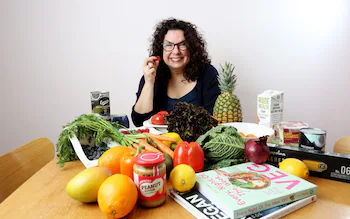In ten weeks, I was able to reduce my weight and cholesterol using an antiquated method that I had attempted weight loss medications.
You can no longer trick the scales at one point in your life. The bathroom mirror, which stubbornly refuses to show the attractive 35-year-old you’re certain still lives in your mind, is also not to blame.
Weight gain may be caused by a variety of factors, including medicine, menopause, fine living, and injuries that make exercise difficult. Additionally, it is more difficult to lose weight with each year that goes by and each “life mile” that is accrued.
With Spanx and a loose-fitting shirt, you can conceal a certain amount, but it’s not just about how you appear. Being overweight increases our chance of developing almost every disease you can imagine as we get older, including heart disease, Type 2 diabetes, several types of cancer, and Alzheimer’s.
I was 56 years old and no different. For most of my adult life, I had been sporty and slender, but in recent years, I had become more and more appalled by the images I saw in photos and mirrors. I was depressed for days after seeing the “back view” at the M&S changing room.
My blood numbers were another factor to take into account. My LDL (or “bad”) cholesterol and total cholesterol, which are risk factors for heart disease and strokes, were both noticeably rising in recent regular testing.
Attempting Weight Loss Medications
I took Mounjaro, the newest of the new generation of weight reduction medications, in September of last year because I was excited about the prospect of cutting corners. To put it mildly, I did not appreciate my experience with this. However, it worked: I dropped four pounds in the one week I could tolerate taking the medicine, which was positive.
I have ten weeks to produce a discernible change. I like a deadline and a task. Will I be able to reverse the biological clock or even age-proof myself?
The Consultation
Fortunately, I was able to get twice-weekly weight and strength training sessions at Evolution, the club owned by Matt Roberts, the fitness journalist for The Telegraph.
My diet would be based on a sensible, sustainable plan that Evolution’s nutritionist, Nicola Marsh, would support and make adjustments to as needed. Blood tests, a liver scan, and a recurrent body-composition “Styku” scan were to be used to gauge my improvement.
I consented to the scans and blood tests at the beginning of October. Even if the findings weren’t shocking, seeing them in black and white was nonetheless depressing.
I weighed 12st 3lb before embarking on the Mounjaro. My LDL was 5.6 and my cholesterol was an alarming 7.25 (normal ceilings are 3 and 5, respectively). Even though my blood sugar was within a healthy range and my liver was gorgeously sleek rather than “fatty,” there was still plainly work to be done if I wanted to age-proof my future.
My Anti-Aging Approach
My physical strength would be the first step in this process. Even 10 minutes a week of weight training has been connected to a five-month decrease in biological age, according to new research from Brigham University in the United States. Lifting weights at the gym three times a week may give you the physique of someone eight years younger.
Roberts agreed that using weight training as the foundation for my anti-aging endeavors was a smart move. “With some fundamental principles, the goal is to get your body working as efficiently as possible,” he explains. Increasing your strength helps you remain upright, move, and operate. You use more energy when you have a larger muscular mass. Muscle increases your metabolism and aids in blood sugar regulation. Being strong improves your balance and bone density, all of which are crucial as you age.
I thus decided to take advantage of this. I promised to keep up the wonderful work I had begun, but with “old-fashioned” approaches to exercise and food.
Additionally, Roberts recommended that I do “Zone Two” cardio exercise, which involves operating at 60 to 70 percent of my maximum heart rate. Using a 5 kg weight in my backpack, I was able to fast walk for an hour twice a week (later increased to a slow run).
Sustainable Nutrition Plan
Following a sensible diet is crucial for improving health and reducing cholesterol. Marsh helped me develop a plan that would combat my cholesterol by swapping out my typical morning meals with porridge oats, berries, and chia seeds. Oats are rich in beta-glucan, a dietary fiber that helps lower cholesterol. I also consumed a daily serving of Benecol yogurt, rich in plant sterols.
I scheduled three alcohol-free nights per week, swapped out all white carbohydrates for wholemeal ones, and even tried to incorporate one vegetarian day each week. Marsh would analyze my daily food and drink intake, together with details on my daily activity, on a dedicated web form. Being held accountable felt nice.
The First Month of Results
My kitchen cabinets were revamped. Bread, white rice, and pasta were replaced with whole grain varieties, quinoa, and unsalted nut packages. For a nutritious snack, the refrigerator was stocked with dates, Greek yogurt, avocados, hummus, blueberries, and raspberries. The dish of fruit overflowed with plenty.
Breakfast is a great place to start. I used the porridge mix instead of my usual bread and jam. Marsh believes that Quaker’s fast, microwaveable pouches are perfect and that there’s no need to mess around with overnight oats or saucepans.
Continued Success
After two months, I began to notice a reduction in my cholesterol levels. My LDL cholesterol dropped significantly, and my blood sugar levels were more stable. This was a direct result of sticking to the sensible diet plan, exercising regularly, and making smarter lifestyle choices.

